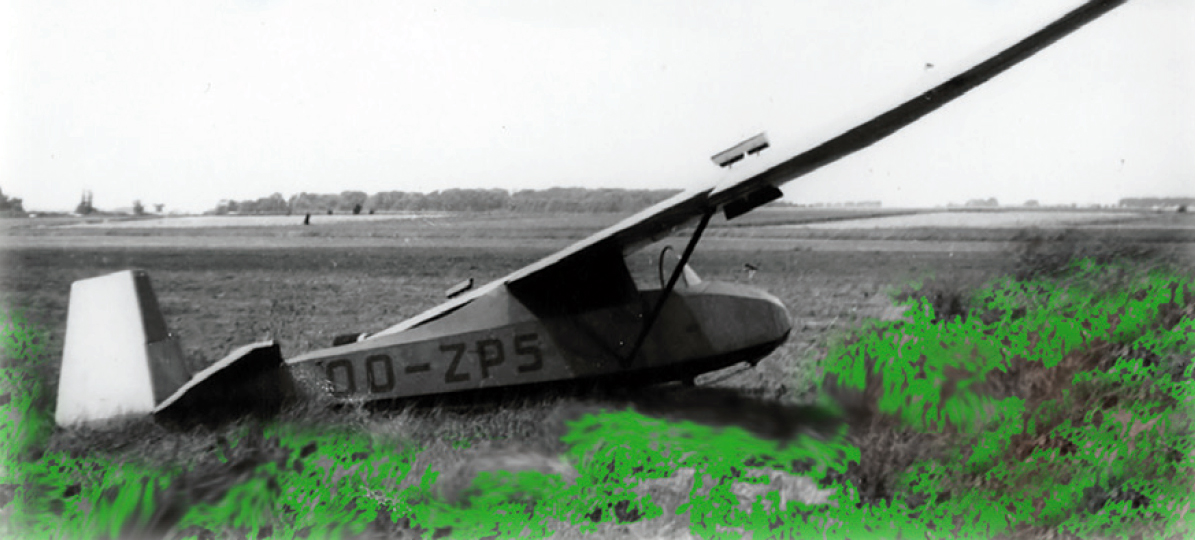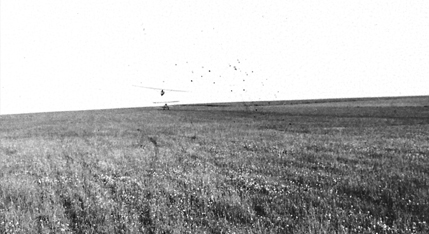TWO "FIRST" SOLOS


Two "FIRST" SOLOS.
August 31, 1956. On the Namur/Temploux airstrip, then known as ONNR, now EBNM. Jean Evrard, CFIG, gives his final recommendations to a 15-year-old boy, whom he helped strap into the Grunau Baby. The student is ill at ease, nothing looks familiar. All the dual instruction was done in a K-2, a top-notch two-seater, the best at the time, but the solo takes place in a very different environment. No canopy, just a half-circle of plexiglass. The Baby was designed before the war, the open cockpit ensures a good perception of the quality of the turn. Whether one slips of skids, the hat flies away. The wool string taped to the canopy had yet to be invented. This glider has the color of a brick and is said to have the same glide ratio.
Ahead of the glider, an RAF surplus Tiger Moth. The instructor, who holds the wing tip, waves, relayed by the wingman for the tow plane pilot. No radio in those days! The “lazy Tiger” inches forward, the hemp rope tightens, the glider’s skid slides on the grass, and very soon the Baby takes off, far quicker than the K-2. It must be held close to the ground, so that the Moth can accelerate and take off.
The tow goes smoothly. At 500m AGL, the Moth rocks its wings, the student pulls twice on the red ball, the rope pels away and the glider clears to the right. It is a moment of great loneliness! A few turns, and it is time to head for the downwind leg then turn base. “Come high”, Mr Evrard had said, and the Baby sinks fast, one must overfly the barbed wire fence at the runway threshold.
Landing is smooth, very long but Lilianne is already there, at the wheel of the old Bedford, also ex-RAF, and this first solo is followed by a second one, required to obtain the gliding “B” license.

In 1956, it is the cold war, the Belgian air force receives hundreds of Meteors, Hunters, Thunderjets. As for Sabena, it grows fast. The RAF WW2 veterans who form the bulk of the crews will retire, hundreds of pilots must be trained, and the State has launched an ambitious program to train young boys as glider pilots, at Saint Hubert in the Ardennes (EBSH) and at Temploux. The approach is definitely sexist: there is a single dormitory, girls are not invited. A leaflet has been distributed at the high school, Dad said yes at once, and I found myself at Temploux.
I have always been fascinated by airplanes, although our relationship started on the wrong foot. My earliest memory, at the age of three or four years, was going down in my father’s arms to the basement of the nearby coal mine, in the middle of the night, whilst the RAF was trying in vain to knock down the power station supplying electricity to Charleroi. Later, the Germans left, the Americans occupied the nearby Gosselies airfield (now EBCI), they billeted with the locals whose houses were still standing. I ate my first orange and my first bite of chocolate. I still know the taste of Hershey’s milk chocolate.
The GI’s left, peace came. We used to go to Gosselies, watch the Spitfire XIV and the Gloster Meteor, onne could climb to the top of the tower to have a nice view of the field and chat with the controller, who was usually quite bored. We cycled to Florennes (EBFS) to see the Thunderjets and Thunderstreaks of the 2nd tactical wing. This is where we were in the front row to see a F84F crash on final, without damage to the pilot.
First flight with my grandfather during an air show at Melsbroek (EBBR), in a Sabena DC3. Take-off, a wde circle around Brussels, and land. Granddad, for whom it was also a first flight, was scared. Memories, memories...
My second solo took place three years later. A flyer at the high school offered a two-month stay with the members of a US service club, one week per family. I applied, took the tests and was selected. In July 1959, I left home for a small town near Philadelphia.
My interest in aviation was very well received, which earned me hours of simulator at the Science Museum, a medical check to get an FAA student pilot certificate (mentioning “Normal male”), a visit to the Piasecki plant (now Boeing Vertol), a flight in a Navion from a private airstrip, a long flight in a taildragger Cessna (180?) to a Flying Farmers association meeting, purchase of a USAF flying suit (I still have it), and many more happy moments.
After a flight in a J3 Cub as student, club members pitched in to buy me a few more lessons, till the solo. West Chester airstrip was turf, the hangar was just a shelter, but the Cub was my flying carpet, and Bob Shannon, the instructor, a demigod. The solo flights was just a few circles around the field, which is now the Brandywine executive airport, with a nice runway, some jets, and no soul. Bob went on to build another turf airstrip a bit further out. I am forever grateful to the friends who allowed me to live this adventure. I keep in touch with some of their children, old like me.
Sixty-six years on, each take-off give me the same thrill as on these solo flights, and each landing the same stress: in my mind, there is always a barbed wire fence on the runway threshold.


Article written by Jean Claude Dispaux
Contact: jc@dispaux.net

